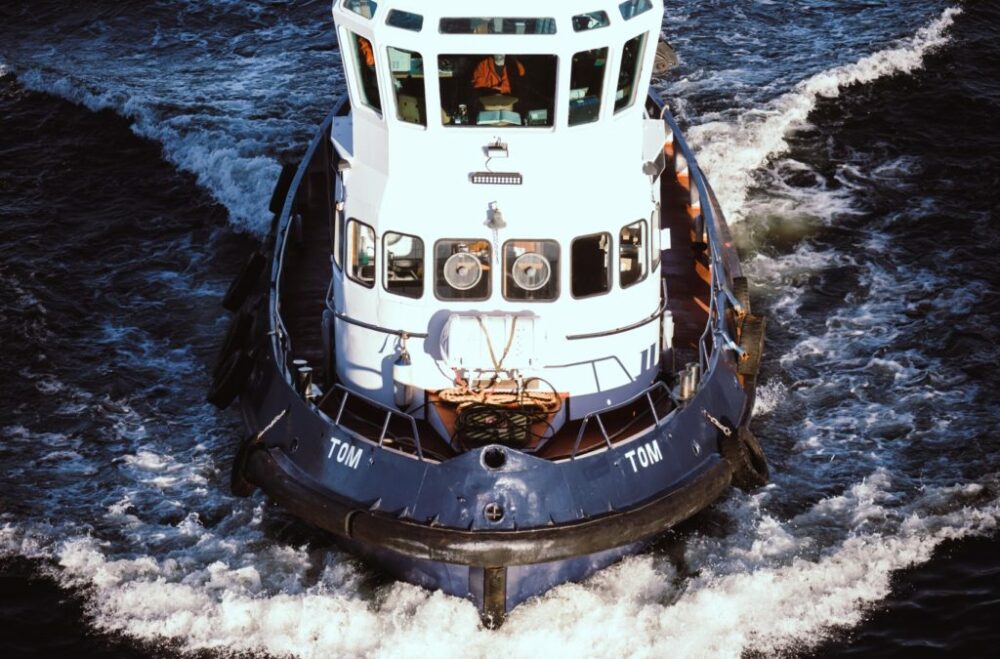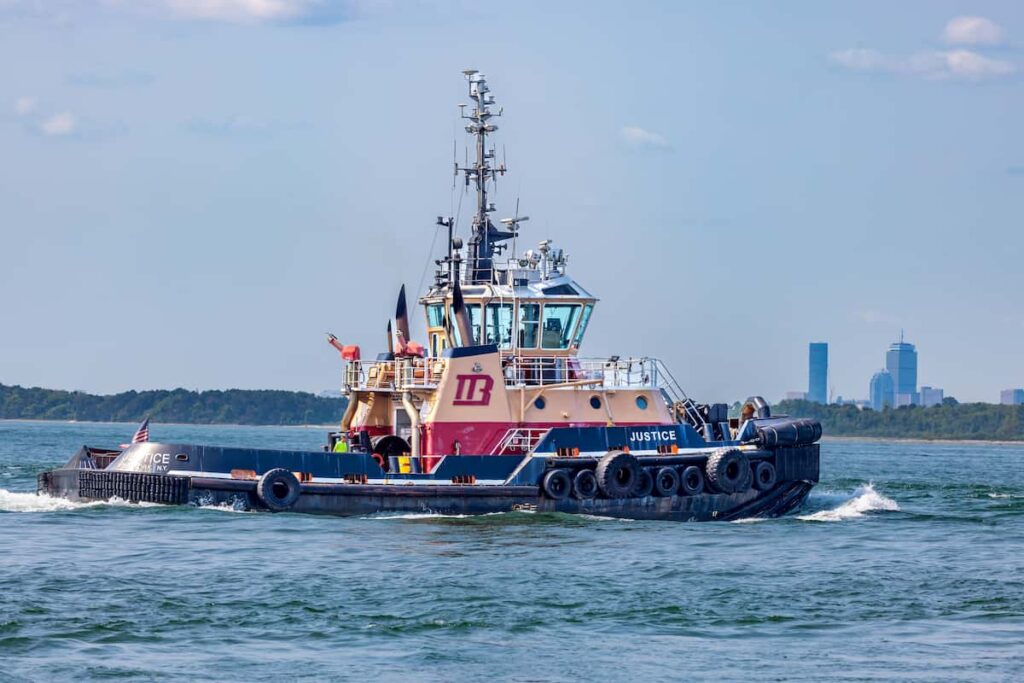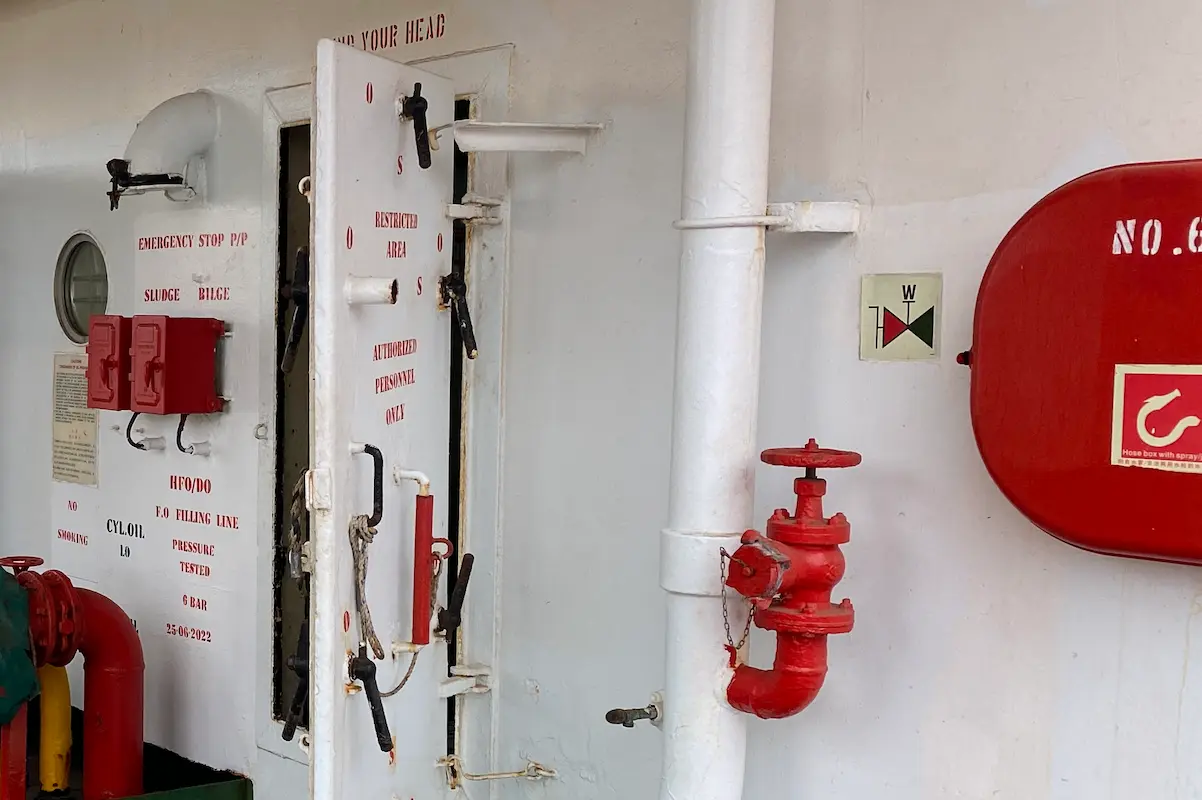If you’ve ever seen a tugboat in action, you might have noticed that they often have tires attached to its sides. But why do tugboats have tires on them? In this article, we’ll delve into the purpose of these tires, their importance, and the benefits they provide. So, let’s set sail and discover the reasons behind this unique feature.

What are tugboats?
Tugboats are small, powerful vessels designed to assist larger ships in maneuvering and docking. They play an essential role in ensuring the safety of ships and preventing accidents in ports and harbors.
Tugboat Types
There are several types of tugboats, including harbor tugs, oceangoing tugs, and river tugs. Each type has its unique purpose and capabilities, but all share the common goal of assisting larger vessels.
Tugboat Functions
Tugboats perform various functions, such as towing barges, pushing ships, and assisting with ship berthing and unberthing. They also provide emergency towing services and aid in salvage operations.

The Importance Of Tires On Tugboats
Cushioning and protection
Tires are used on tugboats as a fendering system, which provides cushioning and protection for both the tugboat and the assisted vessel. When a tugboat pushes against a larger ship, the tires help absorb the impact and prevent damage to both boats’ hulls.
This protection is essential in ensuring the safety of the crew and cargo on both vessels. To learn more about how tugboats can pull so much weight, check out this expert explanation on how tugboats can pull so much weight.
Maneuverability
Tires also enhance a tugboat’s maneuverability, which is crucial for performing intricate maneuvers when guiding larger vessels through tight spaces in ports and harbors. When pushing against a ship, the tires create a point of contact that allows the tugboat to pivot and change direction more easily.
This increased agility enables tugboats to work more efficiently and prevent potential accidents. Discover more about these heroes of the shipping industry and their critical role in maritime transportation.
Enhanced grip
The rubber tires offer a better grip on the assisted vessel’s hull, preventing slipping and ensuring a more secure connection between the two boats. This enhanced grip is vital when working in adverse weather conditions, such as heavy rain, strong winds, or rough seas, where maintaining a firm grip on the assisted vessel is crucial for the safety of both vessels.
Tugboats play an essential role not only in daily shipping operations but also in events like NYC’s Annual Tugboat Races, showcasing their strength and agility.
By providing cushioning and protection, enhancing maneuverability, and ensuring a secure grip, tires play an indispensable role in the operations of tugboats. They help these small yet powerful vessels safely and efficiently assist larger ships, ensuring the smooth functioning of the maritime industry.
Types Of Fendering Systems
Tire Fenders
Tire fenders are the most common type of fendering system used on tugboats. They consist of used truck or aircraft tires, either cut in half or used whole, attached to the tugboat’s sides. Tire fenders are an economical and effective solution for protecting the hull during berthing and unberthing operations. To learn more about the berthing and unberthing of a ship, check out this informative article.
Pneumatic Fenders
Pneumatic fenders are inflatable rubber fenders filled with air. They offer excellent energy absorption and are often used in situations where a more flexible fender is required, such as during the mooring of large vessels, ship-to-ship transfers, or in areas with substantial tidal variations.
Pneumatic fenders are particularly useful for ships with sensitive or delicate hull structures, as they can absorb more impact energy and reduce the risk of damage. To learn more about different parts of a ship and their functions, check out this easy guide to ship parts and functions.
Foam Filled Fenders
Foam-filled fenders are made of closed-cell foam encased in a tough outer layer of rubber. They offer a similar level of protection to pneumatic fenders but do not require inflation. Foam-filled fenders are particularly suitable for situations where puncture risks are higher, or where maintaining constant inflation pressure is challenging. They are also popular for their low maintenance and long service life.
How tires are attached to tugboats
Tires are typically attached to tugboats using chains, ropes, or metal brackets. They are secured to the sides of the vessel at regular intervals, ensuring that the entire length of the tugboat is protected. In some cases, tires may be covered with netting or fabric to further prevent damage and reduce wear.
Proper attachment and maintenance of fenders are crucial to ensure that tugboats can safely perform their duties, such as assisting marine pilots during docking maneuvers. To understand more about the role of a marine pilot, read this article on what a marine pilot does.
By understanding the different types of fendering systems and how they are attached to tugboats, operators can select the most appropriate solution for their specific needs, ensuring the safety and efficiency of their operations.
Advantages Of Using Tires On Tugboats
Cost-effective
One of the primary reasons tires are used on tugboats is their cost-effectiveness. Used tires are readily available and relatively inexpensive compared to other fendering systems. This makes them an attractive option for many operators, especially in situations where budgets are limited.
Durability and resilience
Tires are incredibly durable and resilient, able to withstand the rigors of daily use in harsh maritime environments. They can handle the pressure and impact from pushing against larger vessels without significant wear or damage.
Environmental benefits
By repurposing used tires, tugboat operators are giving new life to a material that might otherwise end up in a landfill. This helps reduce waste and contributes to a more sustainable shipping industry.
Conclusion
In summary, tugboats have tires on them to serve as an effective fendering system, providing protection, maneuverability, and grip when assisting larger vessels. Tires are a cost-effective, durable, and environmentally friendly solution for this critical role in the maritime industry. So, the next time you see a tugboat with tires on its side, you’ll understand the important purpose they serve.
- 11 Boat Salvage Yards in Texas – January 18, 2025
- 7 Boat Salvage Yards in Michigan – January 15, 2025
- Fire Hose SOLAS Requirements, Regulation 10: Ensuring Maritime Safety – January 9, 2025



